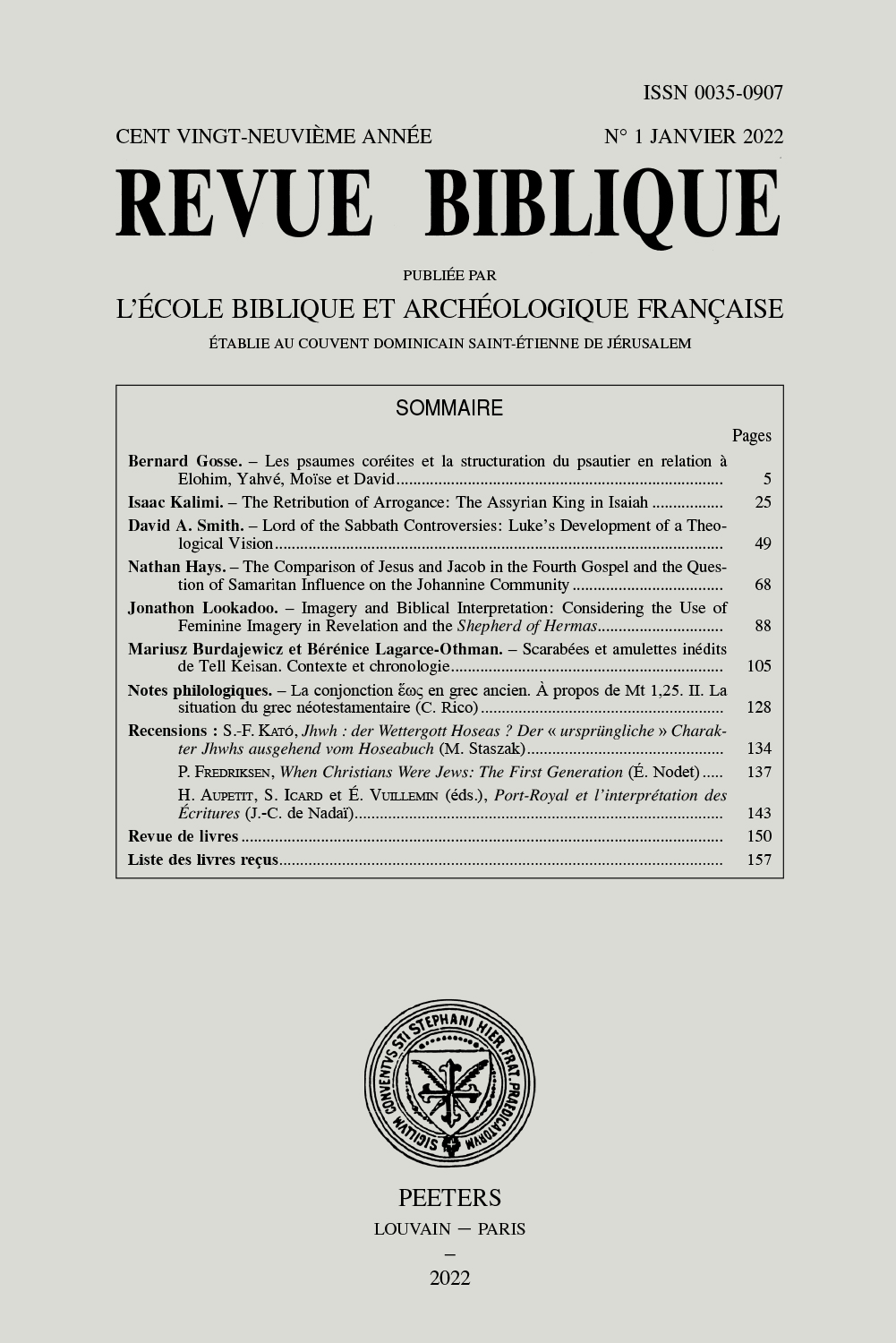 previous article in this issue previous article in this issue | next article in this issue  |

Preview first page |
Document Details : Title: La violence dans le Nouveau Testament Subtitle: L'exemple de l'évangile de Matthieu Author(s): CHARLES, François-Dominique Journal: Revue Biblique Volume: 131 Issue: 4 Date: 2024 Pages: 492-507 DOI: 10.2143/RBI.131.4.3293971 Abstract : L’évangile de Matthieu comporte des récits d’une grande violence comme le massacre des enfants de Bethléem et la décapitation de Jean Baptiste. Ces récits annoncent celui de la Passion de Jésus dont la rédaction matthéenne accentue la violence. Paradoxalement, l’évangile de Matthieu met en relief la douceur du Christ qui s’avance au milieu de cette violence, jusque dans sa Passion. Certaines paroles et paraboles du premier évangile comportent une violence verbale de la part de Jésus qui peut surprendre et interroge: le comportement du Christ étaitil toujours non-violent? L’auteur s’intéresse plus particulièrement au logion des violents en Mt 11,12-13 et à celui du glaive en Mt 10,34. Ces paroles, qui semblent contraires à l’enseignement du Sermon sur la Montagne où Jésus invite à des attitudes non-violentes, remontent-elles au Jésus historique ou reflètent-elles le conflit de l’époque de l’évangéliste entre la communauté matthéenne et les autorités juives? The Gospel of Matthew includes stories of great violence such as the massacre of the children of Bethlehem and the beheading of John the Baptist. These narratives announce the story of the Passion of Jesus whose Matthean writing accentuates the violence. Paradoxically, the Gospel of Matthew highlights the gentleness of Christ who advances in the midst of this violence, even in his Passion. Some words and parables of the first gospel contain a verbal violence on the part of Jesus which can surprise and question: Was the behavior of Christ always non-violent? The author is particularly interested in the logion of the violent in Mt 11:12-13 and that of the sword in Mt 10:34. These words, which seem contrary to the teaching of the Sermon on the Mount where Jesus invites to nonviolent attitudes, do they go back to the historical Jesus or do they reflect the conflict of the time of the evangelist between the Matthean community and the Jewish authorities? |
|


